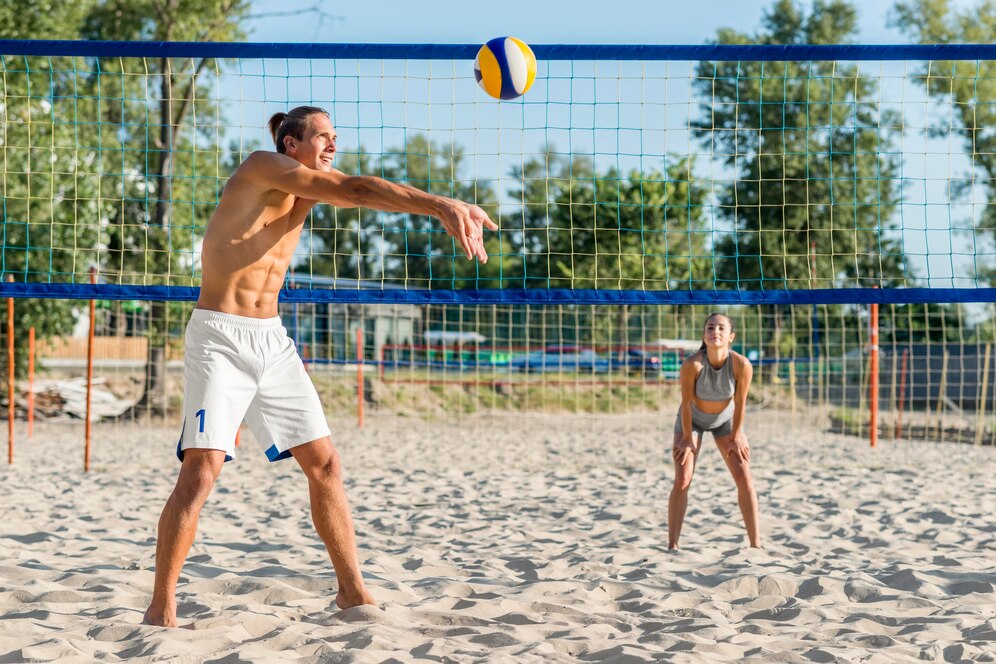If you’re ready to take your volleyball game to the next level, there is no better way than to bolster your fitness routine.
While it may seem counterintuitive that physical training can benefit performance on a court rather than concentration and agility drills, strength and stamina play a huge role in success when it comes to competitive sports like volleyball.
That’s why developing an effective exercise plan for core exercises and dynamic stretches should be integral to any serious player’s repertoire.
In this blog post, we’ll examine the best workouts for volleyball players:
Related Blogs:
Best Workouts For Hockey Players
Best Exercises For Golf Players
Best Exercises For Volleyball Players
Here are the best workouts for volleyball players that will help up their game:
1. Agility Ladder Drills
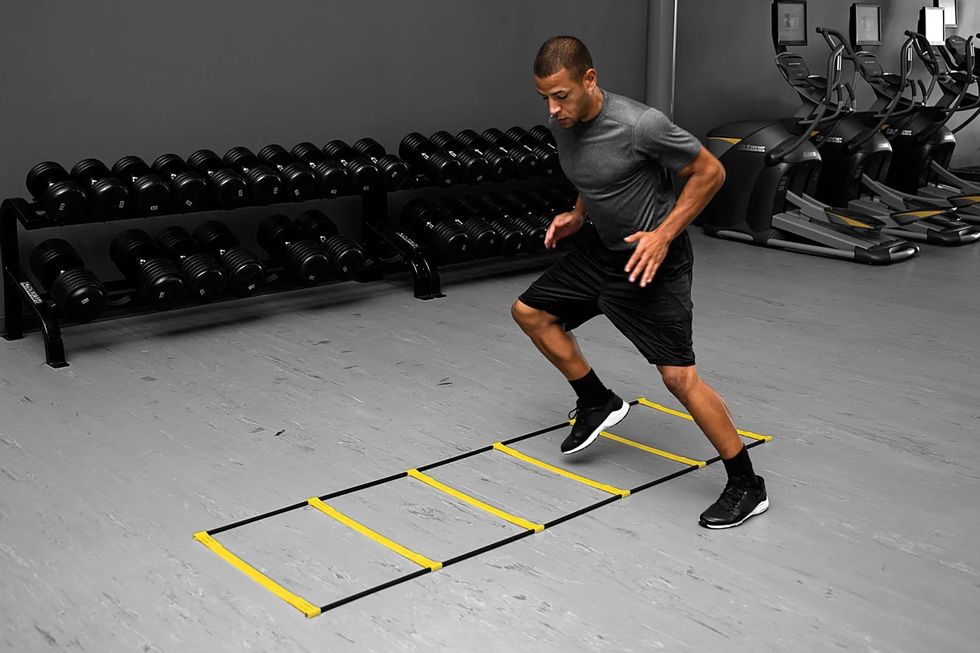
These drills improve footwork, agility, and quickness, allowing players to change direction rapidly and maintain precise positioning on the court.
Agility ladder drills are among the top beginner-level workouts for volleyball players, which enhance hand-eye and foot-eye coordination, helping players react more effectively to the ball.
Performing ladder drills boosts cardiovascular conditioning, enabling players to endure extended rallies and matches.
Related: Calisthenics Leg Exercises
Step-By-Step Guide:
- Lay an agility ladder flat on the ground.
- Stand at the ladder’s starting point with one foot on either side of the ladder.
- Perform a variety of footwork drills, such as high knees, lateral shuffles, quick steps, and zig-zags, by stepping into and out of the ladder squares.
- Keep your movements quick and precise, maintaining good form throughout.
- Continue through the ladder, and once you reach the end, turn around and go through the drills in the opposite direction.
- Repeat the ladder drills for a set duration or number of repetitions.
2. Vertical Jumps
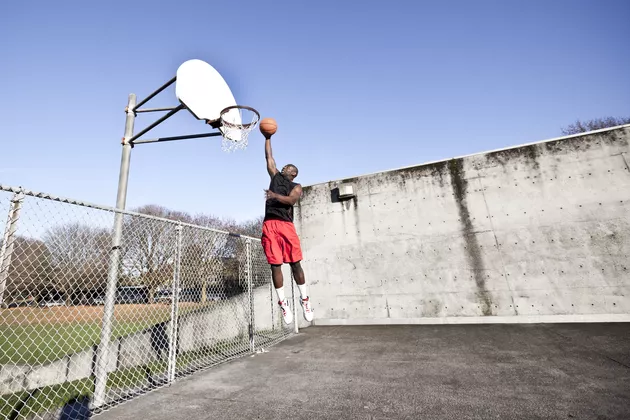
Vertical jumps are crucial for blocking, spiking, and reaching high for digs. Improved jumping ability allows players to attack and defend more effectively.
This exercise enhances lower body explosiveness, aiding in rapid acceleration and height in jumps.
Developing a higher vertical jump contributes to a volleyball player’s overall athleticism and competitive edge.
Step-By-Step Guide:
- Start in a standing position with your feet shoulder-width apart.
- Bend at the knees and hips to lower your body into a squat position.
- Explosively jump upward, extending your hips, knees, and ankles while swinging your arms up for momentum.
- Reach as high as you can at the peak of your jump.
- Land with soft knees to absorb the impact, and immediately go into the next jump.
- Perform the vertical jumps for the desired number of repetitions, focusing on maximum height with each jump.
3. Medicine Ball Throws
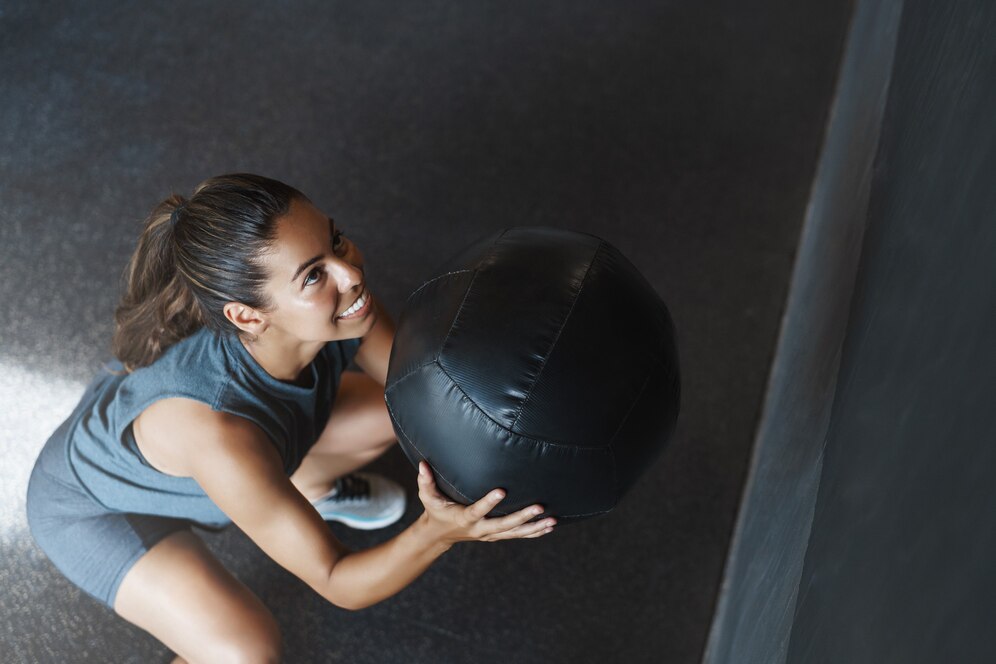
Medicine ball throws are excellent volleyball workouts for building explosive power in the upper body, which is crucial for serving and spiking in this competitive game.
These throws engage the core muscles, enhancing stability and control during movements on the court.
The throwing motion closely mimics the action of serving and spiking, making it a sport-specific exercise.
Step-By-Step Guide:
- Stand with your feet shoulder-width apart, holding a medicine ball (typically 4-10 kg) in front of your chest.
- Engage your core and keep your back straight.
- With a slight bend in your knees, lower your body into a quarter-squat position.
- Explosively extend your hips and knees while pushing the medicine ball forward and upward.
- Release the ball at the peak of your jump, focusing on accuracy and distance.
- Catch the ball and repeat the exercise for the desired number of repetitions.
4. Jumping Jacks

Jumping jacks effectively improve cardiovascular endurance, helping volleyball players maintain their energy levels throughout a match.
They enhance agility and coordination, which are essential for quick movements and reactions on the volleyball court.
Jumping jacks serve as a great warm-up exercise for volleyball players to prepare the body for more intense physical activity.
Step-By-Step Guide:
- Start with your feet together and arms by your sides.
- Simultaneously jump while spreading your legs apart and raising your arms above your head.
- Land with your feet shoulder-width apart and your arms extended overhead.
- Quickly reverse the motion by jumping again and bringing your feet together while lowering your arms.
- Continue this fluid motion for the desired duration, maintaining a brisk pace.
5. Hex Bar Deadlift
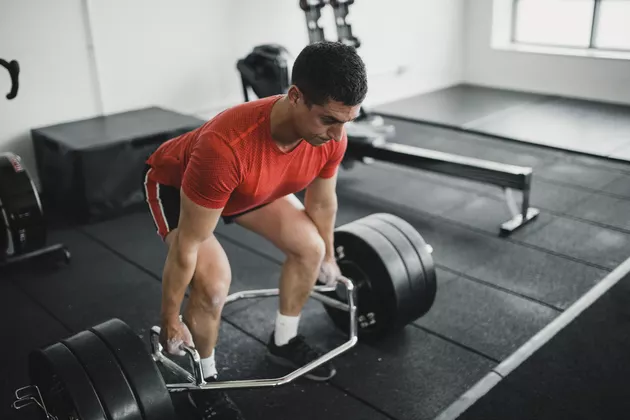
Deadlifts primarily target the lower body, especially the hamstrings, glutes, and lower back. This strength is essential for explosive movements like jumping and quick directional changes.
Deadlifts engage the core muscles, which are vital for maintaining posture and stability during play.
Strengthening the lower back and hamstrings can help prevent common volleyball injuries.
Step-By-Step Guide:
- Stand inside a hexagonal or trap bar with your feet hip-width apart.
- Bend at your hips and knees to lower your body and grasp the handles of the bar with a neutral grip.
- Keep your back straight and chest up.
- Push through your heels and extend your hips and knees to lift the bar off the ground.
- Stand up tall, fully extending your hips and knees.
- Lower the bar back to the ground with control, maintaining proper form.
- Perform the desired number of repetitions.
Over To You
Incorporating these exercises into your routine will help you reach peak performance for your volleyball team.
Not only will you be able to serve and spike on an elevated level, but further taking care of your body and developing this muscle memory will also help protect against injuries while playing volleyball.
Following a well-structured plan can make all the difference in sports that require split-second decisions and reactions.
We hope our suggested exercises are beneficial to any aspiring volleyball player looking to train like an athlete.
Be sure to follow “Olympire” blogs for more tips, tricks, and advice related to athletics.


